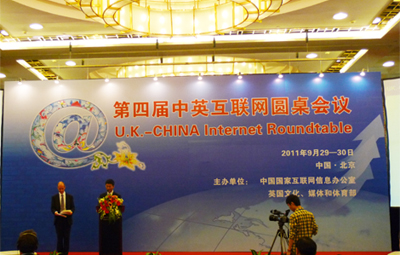From black coal to green power
Updated: 2011-10-05 12:05
(Xinhua)
|
|||||||||
BEIJING - Some nightmares don't fade with time. Liu Jianjun, a truck driver from Hebei province, still drives apprehensively on the Beijing-Tibet highway - hoping to never again endure the hellacious, unprecedented traffic jam that occurred on July 17, where Liu found himself ensnarled with 20,000 other vehicles in Zhuozi county, Inner Mongolia. In 40 hours - nearly two days - Liu's truck crawled only 100 kilometers.
The majority of the trucks trapped in the extreme gridlock were there for the same reason - to transport coal.
Coal has tipped the scales of the Chinese economy and in turn raised the living standards for millions. Coal accounts for about 70 percent of China's energy mix, 30 percentage points higher than the world average.
Such heavy reliance on coal to boost the economy has led to serious pollution and ecological damage, severely hampering China's sustainable development.
More non-fossil energies
As a way out, China has resolved to develop non-fossil renewable energies over the next five years. It plans to increase consumption of non-fossil energies by 210 million tonnes of coal equivalent during the 2011-2015 period. This will make the total non-fossil energy consumption reach 470 million tonnes of coal equivalent by 2015, 11.5 percent of the total energy consumption in China, says Xu Dingming, counselor on the State Council.
The target includes, of coal equivalent, 280 million tonnes hydropower, 90 million tonnes nuclear power, and 100 million tonnes of other renewable energies, such as wind power, solar power, and biomass energy.
Xu says China is planning to increase hydropower installed capacity to 260 million kilowatts by the end of 2015. Thus China's annual hydropower output will reach 910 billion kilowatt hours by 2015. To this end, China will construct eight 10-million-kilowatt hydropower bases in west China.
But hydropower projects are double-edged swords, imperiling local ecological environments in the course of generating clean energy.
Yao Cucheng, a 42-year-old farmer, has a long face these days. Yao has been devoted to artificial propagation of Schizothorax prenanti, an endangered species of fish, in Shennongjia, Hubei province, for six years.
Yao has managed to raise 100,000 fish in a pond by directing water, algae and aquatic organisms from the Guchong River in the forest zone. He plans to expand the stock of fish to 500,000 next year.
But the good time will end soon. Upstream, a hydropower station is planned, and that means the river will soon be dammed and cut off.
Shennongjia, a biodiversity protection demonstration area of Asia, has seen small hydropower stations built since the 1970s. The hydropower plants, with 300MW total installed capacity, have essentially supplied enough cheap power for lighting and fuel to local residents, who subsequently no longer need to chop down trees for fuel.
But the blocked up rivers have created a survival crisis for aquatic flora and fauna in the region, where 4,700 varieties of animals and plants live in and along 317 rivers, including 35 species of wild fish.
Zhang Guobao, former head of the National Energy Bureau, says China should develop hydropower on the condition of protecting ecological environments.
Wind power, the trendy energy alternative, has developed vigorously over the past five years. In 2010, China replaced the United States as the nation with the largest installed capacity.
Zhang says the grid-connected wind power installed capacity is designed to hit 100 million kilowatts and annual electricity output by wind power will reach 190 billion kilowatts hours by the end of 2015.
China also plans to increase the installed capacity of the solar photovoltaic system to 9 million kilowatts by the end of 2015 and expand the application of solar energy water heaters to 400 million square meters by the end of 2015.
In addition, China intends to raise biomass energy installed capacity to 13 million kilowatts by 2015 from the 5.5 million kilowatts generated at the end of 2010 -- an average annual growth rate of 18.77 percent.
China will also raise geothermal power installed capacity to 100,000 kw by 2015, and build one or two 10,000-kilowatt tidal power stations and 50,000-kilowatt ocean power plants before end of 2015.
Zhang says that to support renewable energy generation, China will extend subsidy policies for renewable energy products and encourage direct trading between renewable energy generators and power consumers.
Fossil energy dominates
Despite great efforts to promote the weight of non-fossil energies, fossil energies remain the main force in China's power supply.
Xu says China's fossil energy consumption is targeted at 3.63 billion tonnes of standard coal equivalent by 2015.
In 2010, China, the world's largest energy producer and consumer, consumed 3.25 billion tonnes of primary energy, 32 percent higher than that of 2005.
The 2015 target consists of 3.82 billion tonnes of raw coal (2.61 billion tonnes of standard coal), 500 million tonnes of oil (710 million tonnes of standard coal), and 230 billion cubic meters of natural gas (310 million tonnes of standard coal).
Coal will weigh 63.6 percent of total primary energy consumption by 2015, down 7.3 percentage points from that of 2010.
To save energy and reduce emissions, China will go on eliminating outdated small thermal power generating units.
In the past five years, China has shut down thousands of outdated small thermal power generating units, totaling 72GW. It equals the total installed power generating capacity of Britain. The measure saves 81 million tonnes of raw coal and reduces emissions of 160 million tonnes of carbon dioxide each year.
China remains in the demonstration phase of developing modern coal chemical projects, since it lacks experiences in massive commercial running of the facilities. Except for encouraging expansion projects in coal-to-gas (CTG) and coal-to-alcohol ether, China will strictly control the scale of coal-to-liquid (CTL) projects, especially direct CTL projects.
Industry officials propose China use more natural gas to break away from excessive reliance on coal.
Natural gas, cleaner and more efficient, accounts for about 4 percent of China's primary energy consumption. The percentage is about one sixth of the world's average. China could boost the use of natural gas, as it is rich in reserves and less expensive.
Using more natural gas will also help alleviate China's rising dependence on imported oil, which threatens China's energy security.
In the first five months of the year, China's dependence on imported oil rose 55.2 percent, up from 55 percent in 2010, and 33 percent in 2009, according to the Ministry of Industry and Information Technology (MIIT).
Industry officials expect China's dependence on imported oil will jump to 60 percent by 2020 and 65 percent by 2030.










